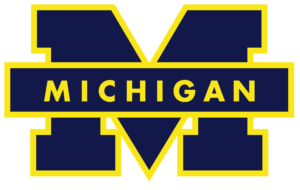
Undergrad Music Programs at the University of Michigan
This school appears in our ranking of the 10 Best University Jazz Programs 2017-2018. The University of Michigan has its own School of Music, Theatre & Dance. It offers degree programs for undergrads with an interest in music. This school offers three options for those who like playing jazz. One of these programs awards students a Bachelor of Fine Arts (BFA) in Jazz & Contemplative Studies. This program helps students hone their playing and performing skills while learning more about music theory. Students can enroll in a BFA in Jazz & Contemporary Improvisation to learn how to improvise or enroll in a more traditional BFA in Jazz Studies program. Students who want to earn a Bachelor of Music can enroll in one of seven different programs. The university allows students to major in:- composition
- music theory
- music education
- piano
- organ
- wind instruments
- voice performance
About University of Michigan
The University of Michigan is one of the top public institutions of higher learning in the Midwest. It was founded in 1817 before Michigan became a state. The university has a large campus in Ann Arbor that consists of four locations. Ann Arbor has a reputation as a college town, and many university students live and work in the city after they graduate. Washington Monthly, ARWU, Forbes and U.S. News & World Report all rank the university in the top 50 of all schools in the United States. Some of its degree programs with a national ranking include those in:- business
- education
- law
- medicine
University of Michigan Accreditation Details
The University of Michigan is accredited by the North Central Association of Colleges and Schools (NCACS). Accreditation allows students to transfer credits to or from the university and to apply for financial aid. They can use any of the federal or state aid given to them too. Michigan also has specialty accreditation for many of its degree programs. The National Association of Schools of Music (NASM) accredited all its music programs.University of Michigan Application Requirements
Michigan is one of the most selective institutes of higher learning in the Midwest. It accepts less than 30% of the applications that it gets every year. Unlike other colleges that allow students to submit a general application, Michigan requires that students choose their majors ahead of time. They must apply to the department or college responsible for that program. Students can use either the Coalition Application or the Common Application. Both applications allow students to submit their information to multiple schools. The university also charges a $75 application fee that students must pay when they submit their applications. The early action deadline set by the university is November 1, but students applying for regular admission have until February 1 to submit their applications. They must ensure that the university receives all other required information and documents by its deadline. Michigan asks for a high school transcript that shows:- class ranking
- cumulative grade point average
- the grades the student received in his or her last few years
Tuition and Financial Aid
Students taking classes at Michigan pay one rate in their first two years and a slightly higher rate in their later years as they take more advanced classes. Tuition at the university starts at $7,452 per semester for Michigan residents. It’s $23,889 for nonresidents. Students can take up to 18 credit hours each semester without having any extra fees. The cost increases once students take at least 54 credits. They then pay $8,476 as residents and $25,554 as nonresidents. The university also offers a set rate for part-time students that charges them one rate for the first credit hour they take and a second rate for each additional credit hour. New undergrads applying to the university can use the FAFSA and find out if the university will give them any financial aid for the coming year. They’ll also learn how much they will get and the type of aid given to them. The university has a Go Blue Guarantee that helps students avoid unexpected tuition hikes in the future. Students qualify for this program based on the amount they or their families make and the number of assets they have. Those who fill out the FAFSA may qualify for grants and loans from the government and scholarships from the University of Michigan itself.Related Resources:
Featured Programs
20 Most Important Student Protests on College Campuses
Top 20 Degrees for Creative People
